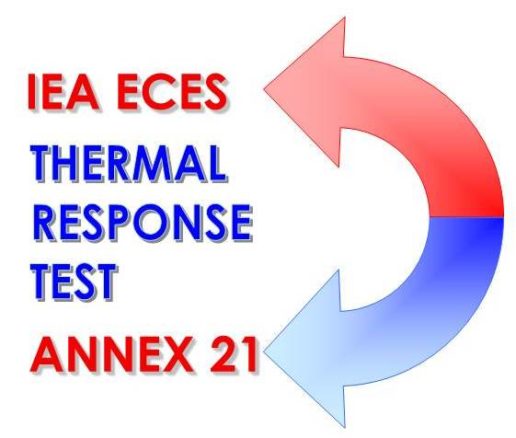
Thermal Response Test (TRT) is a measurement method to determine heat transfer properties of a borehole heat exchanger and surrounding ground in order to predict the thermal performance of a ground-source energy system. The two most important parameters are the effective thermal conductivity of the ground and thermal resistance within the borehole. The TRT equipment is usually mounted on a trailer for easy transportation to test sites. This method has been very important in the rapid spreading of BTES systems. It has been a door opener for introducing the technology in “new” countries.
The first paper suggesting the mobile TRT method was presented by Mogensen at the “Stock” Conference in Stockholm in 1983. It took until the mid 90ies until TRT was developed, independently in US and Sweden, and the very first mobile TRT equipment was operated in 1996 in Sweden. The technology has since spread to about 20 countries in Europe, Asia, North America and South America and will soon be introduced in Africa. Since the TerraStock Conference in Stuttgart 2000, TRT has had a special session at the Stock Conferences.
There are basically two ways to operate the TRT equipment; to inject or extract heat from/into the tested borehole. This is done by circulating a fluid through the borehole that is warmer (injection) or colder (extraction) than the surrounding ground. There are also TRT equipments in which both modes are available. The size and shape of such equipments varies from suitcase to caravan.
The first step of the test is to determine the undisturbed ground temperature. This is usually made by temperature logging in the borehole, or by evaluating the fluid temperature of the circulating fluid before the heating/cooling is switched on.
The measured thermal response is the temperature difference between the circulated fluid’s inlet and outlet temperatures. Superimposed temperature fluctuations usually depend on the varying ambient air temperature or corresponding fluctuations in the power supply to the circulation pump. Air temperature and the power consumption are therefore often measured to separate such disturbances in the evaluation.
Used evaluation methods are: the Line Source Model, which is commonly used in Europe and Numerical Simulation Models which are more often used in North America.
Objectives
The overall objectives of Annex 21 are to compile TRT experiences worldwide in order to identify problems, carry out further development, disseminate gained knowledge, and promote the technology. Based on this overview, a TRT state–of–the–art, new developments and further work are studied.
The Specific Objectives of Annex 21 are:
Overview
- Worldwide use of TRT (country, type, number)
- Purpose of test (design values, research & development, quality control / failure analysis).
- Applications (BHE, energy piles, heat pipe BHE’s, etc.)
- TRT method (heating and / or cooling)
- Experimental setup (monitoring accuracy, etc.)
- Test procedure
- Evaluation models
New Developments and Further work
- Method to determine undisturbed ground temperature
- Swiss method for detailed logging of borehole temperature – swimming data acquisition ‘Fisch’, etc.
- Groundwater influence
- TRT while drilling
- Software for automatic evaluations
- Comparison of equipment and evaluation
- Initiate a common quality standard of TRT worldwide
- Invitation to “new” countries – workshop and courses on how to use TRT
Subtasks
The activities are organized in sub-tasks which are chaired by a responsible lead country.
Sub-task 1. TRT state-of-the-art Study
- Conduct a state-of-the-art survey covering worldwide use including TRT types, purpose, applications, experimental setup, test procedure and evaluation models
Sub-task 2. New Developments
- Method to determine undisturbed ground temperature
- Continuous temperature logging in several depths while testing
- Groundwater influence
- TRT while drilling
- TRT for special geometries like energy piles and horizontal ground collectors
- The Swiss Fish method etc.
- Pulse test
Sub-task 3. Evaluation methods and developments
- Comparison of equipment
- Comparison of test procedure
- Comparison of evaluation methods
- Software for automatic evaluations
- Comparative evaluation of reference test data
- Include heat capacity cp in the evaluation
- Evaluation during testing e.g. to determine duration
- Work out system design models which are especially based on TRT results
Sub-task 4. Standard TRT Procedures
- Initiate a worldwide TRT standard – best practice
- TRT for commissioning and past
Sub-task 5. Dissemination Activities
- Invitation to “new” countries – workshop and courses on how to use TRT
- Common website of compiled TRT information
- Best practise document
- Reports
- Available samples of publications